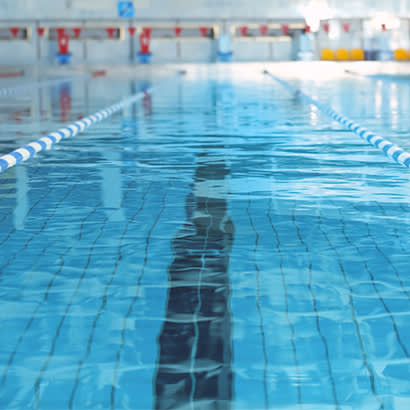
For an enhanced digital experience, read this story in the ezine.
How aquatic facilities can avoid patron confidence pitfalls
Patrons use all of their senses to judge a facility’s safety. When it comes to aquatics, smell is the first thing they encounter.
In the past, aquatic facilities largely ignored air-quality issues due to expectations of the times. Times have changed. In order to keep business alive in this new health-conscious era, aquatic facility operators must prioritize patrons’ sense of safety.
“Nose blindness” doesn’t just happen at friends’ homes — it also can happen at aquatic facilities. “Pool” odor isn’t only unpleasant for patrons — it is harmful to their health too. So, how can we make our aquatic facilities’ air and water quality fresh, welcoming and healthy for new noses?
Leading aquatic facilities, like the Fort Dodge (Iowa) Community Recreation Center (REC), found a solution that has eliminated and prevented “pool” odor and its “nose blinding” effect.
The Challenge
Home to a six-lane Olympic-sized swimming pool and a wading pool, the Fort Dodge Community REC has served its community for more than 50 years. While welcoming swimmers over the years, the facility’s “pool” odor became undetectable to staff.
“I thought the water quality was great,” says Janet Ellerbrock, Fort Dodge Community REC’s aquatic director. “Combined chlorines were low and there were few complaints about the air quality.”
For aquatic facility operators, addressing air quality is a time-consuming task when the culprit is not easily determined. While many patrons assume that “pool” odor comes from chlorine, it actually is a result of chloramines, or combined chlorines. Chloramines occur when chlorine in the pool combines with organic substances, like lotions, sweat and oils. In addition to “pool” odor, chloramines cause burning eyes, irritated skin and damage to swimmers’ hair and swimsuits.
At the Fort Dodge Community REC, a swim coach couldn’t ignore the questionable air quality. While Ellerbrock didn’t believe the air quality needed improving, she obliged, “just to make him happy.” However, her choice to indulge one person would soon benefit everyone at the facility.
The Solution
Despite Ellerbrock’s doubts that it would make a difference, she installed Clear Comfort’s Advanced Oxidation Process (AOP) supplemental sanitation. After seeing the improvements, she now says, “I was totally and completely wrong.”
AOP uses powerful hydroxyl radicals that instantly oxidize and sanitize the water. This patented AOP system is third-party proven to reduce chloramines and other disinfection by-products by 50 percent to 90 percent, making it a sensible solution for Fort Dodge Community REC’s challenge.
The Result
“Since putting the system in, I was proved to be very wrong,” Ellerbrock admits. “The clarity of our water is crystal clear and the combined chlorine levels is close to, if not at, zero. The air even smells and feels fresher.”
In addition to improving the air and water quality, the AOP system helped the Fort Dodge Community REC save time and money.
“Considering the ease of installing the units, very low maintenance and relatively low cost,” says Ellerbrock, “it has been one of the best additions to our facility.”
Let AOP Clean Your Air
While chloramines have been difficult for aquatic facility operators to detect and address, AOP sanitation systems have made it easier than ever to give patrons fresh, soft-feeling and healthy water.
In addition to air quality, adding AOP helps protect patrons from Cryptosporidium, lowers chlorine consumption and addresses issues that aquatic facilities have become blind to.
Steve Berens is Chief Executive Officer of Clear Comfort (info@clearcomfort.com).

